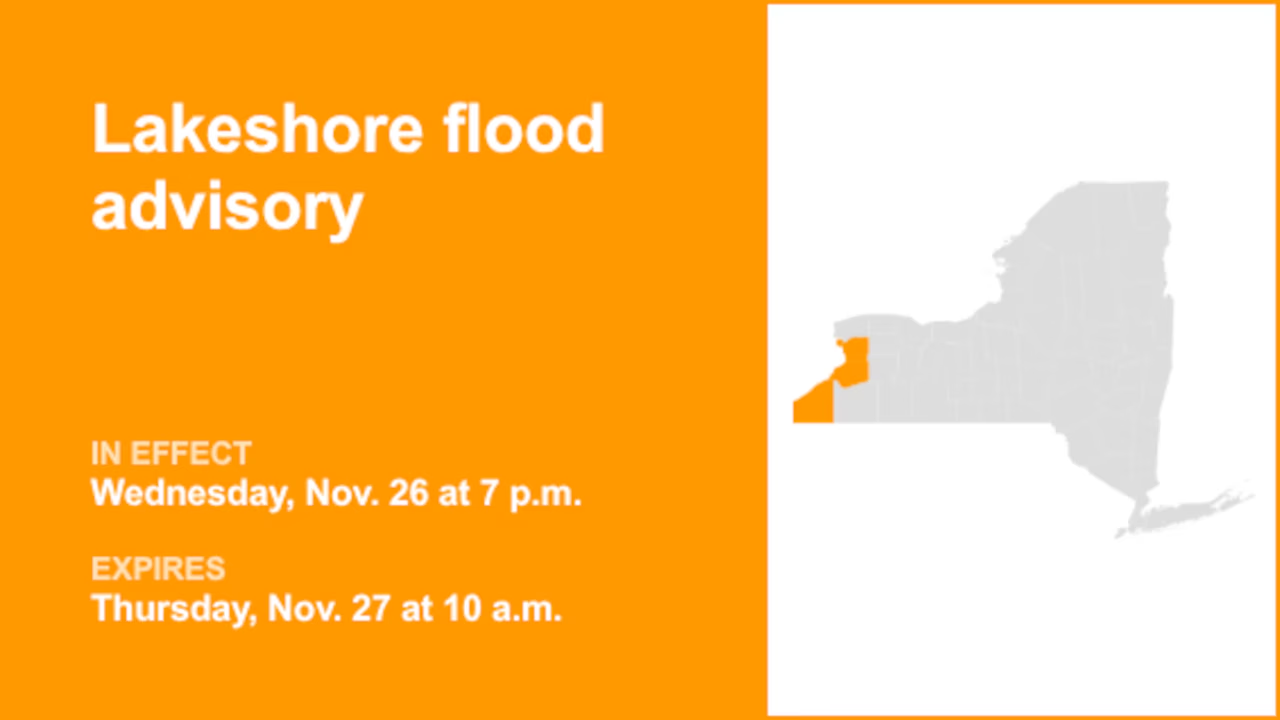Lakeshore flood advisory issued for Western New York until Thursday morning

At 1:35 a.m. on Wednesday, the National Weather Service issued a lakeshore flood advisory valid from 7 p.m. until Thursday 10 a.m. for Northern Erie and Southern Erie as well as Chautauqua County.
The weather service describes, “Minor lakeshore flooding expected.”
“Some water on low-lying roads and property along the lakeshore. Spray from high waves and onshore wind may impact Route 5 in Hamburg. Water levels will rise in Buffalo Harbor and Canalside,” explains the weather service. “Residents on or near the shore should take appropriate action to protect property from rising water levels.”
Your guide to weather alerts: advisories, watches, and warnings
- Flash flood warning: Take action!
A flash flood warning is issued when a flash flood is either imminent or already occurring. In flood-prone areas, it’s crucial to move immediately to higher ground. A flash flood is a sudden and violent inundation that can develop within minutes to hours, and it can even happen in areas not currently experiencing rainfall.
- Flood warning: Take action!
A flood warning is issued when flooding is imminent or occurring.
- Flood advisory: Be aware:
A flood advisory is issued when flooding is not expected to be bad enough to issue a warning. However, it may cause significant inconvenience, and if caution is not exercised, it could lead to situations that may threaten life and/or property.
- Flood watch: Be prepared:
A flood watch is issued when conditions are favorable for flooding. It does not mean flooding will occur, but it is possible.
Weathering the storm: Flood safety guidelines from the weather service
In flood-prone regions or while camping in low-lying areas, understanding and following the weather service flood safety guidelines can be a lifesaver:
Move to higher ground:
If you’re in a flood-prone area, or if you’re camping in a low-lying spot, move to higher ground as a first step.
Adhere to evacuation orders:
If local authorities issue an evacuation order, heed it promptly. Prior to leaving, secure your home by locking it.
Disconnect utilities and appliances:
If time permits, disconnect your utilities and appliances. This precaution minimizes electrical hazards during flooding.
Steer clear of flooded basements and submerged areas:
Steer clear of basements or rooms where water has submerged electrical outlets or cords. This helps prevent electrical accidents.
Evacuate promptly for safety:
If you notice sparks or hear buzzing, crackling, snapping, or popping noises, evacuate immediately. Avoid any water that may be charged with electricity.
Stay away from floodwaters:
Never attempt to walk through floodwaters. Even just 6 inches of swiftly moving water can forcefully knock you off your feet.
Seek higher ground when trapped:
Should you become trapped by moving water, reach the highest point possible and dial 911 to contact emergency services.
When heavy rain occurs, there is a potential for flooding, particularly in areas that are low-lying or prone to floods. It is crucial to never drive through water on the road, even if it appears shallow. According to the weather service, as little as 12 inches of fast-flowing water can carry away most vehicles. Prioritize your safety by staying informed and prepared.





